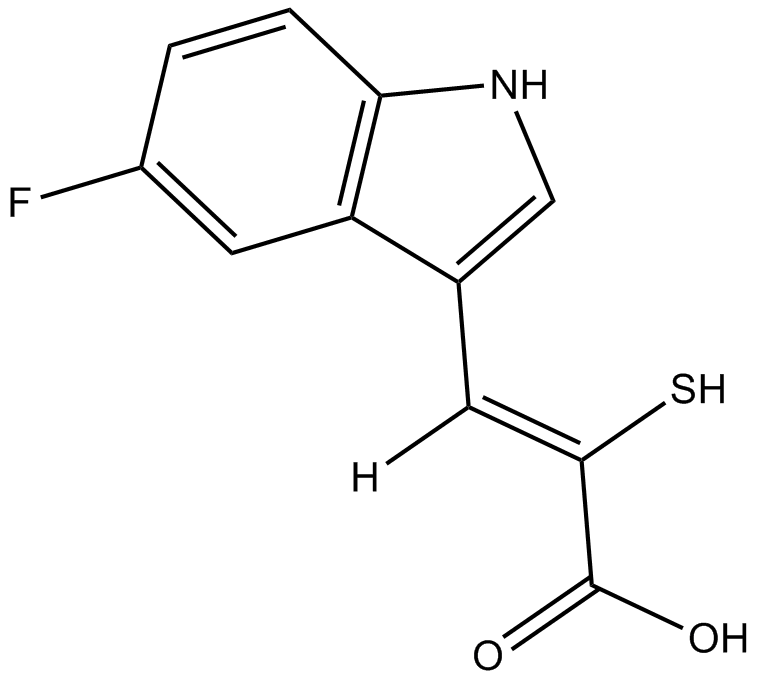PD 151746 |
| Catalog No.GC10561 |
calpain inhibitor, cell-permeable
Products are for research use only. Not for human use. We do not sell to patients.

Cas No.: 179461-52-0
Sample solution is provided at 25 µL, 10mM.
PD 151746 is a potent and selective inhibitor of calpain with Ki value of 0.26 μM for μ-Calpain.
Calpain is a calcium-dependent, non-lysosomal cysteine protease that expressed in mammals and many other organisms. Calpain plays an important role in cell mobility and cell cycle progression.
PD 151746 is a cell-permeable, potent and selective calpain inhibitor. PD151746 significantly inhibited NMDA-induced α-spectrin breakdown product (SBDP) of 145 kDa and completely inhibited the fragmentation of calmodulin-dependent protein kinase II-α (CaMPK-IIα) and nitric oxide synthase (nNOS), which were cleaved by calpain [1]. In cerebellar granule cells, PD151746 inhibited serum/potassium (S/K) withdrawal induced apoptosis by 29% through inhibition of calpain. Also, PD151746 inhibited the increase of MEF2 phosphorylation and cdk5/p25 formation and inhibited caspase-3 activity [2]. In human hepatoma G2 cells, PD151746 significantly reduced insulin-stimulated glycogen synthesis and increased the amount of protein tyrosine phosphatase-ε (PTPε), which suggested that calpain played an important role in regulation of insulin-stimulated glycogen synthesis [3]. In HEK-293 cells expressing human formyl peptide receptor (hFPR) or hFPR-like 1 (hFPRL1), PD151746 increased cytoplasmic free Ca2+ ([Ca2+]i) [4].
References:
[1]. Hajimohammadreza I, Raser KJ, Nath R, et al. Neuronal nitric oxide synthase and calmodulin-dependent protein kinase IIalpha undergo neurotoxin-induced proteolysis. J Neurochem, 1997, 69(3): 1006-1013.
[2]. Verdaguer E, Alvira D, Jiménez A, et al. Inhibition of the cdk5/MEF2 pathway is involved in the antiapoptotic properties of calpain inhibitors in cerebellar neurons. Br J Pharmacol, 2005, 145(8): 1103-1011.
[3]. Meier M, Klein HH, Kramer J, et al. Calpain inhibition impairs glycogen syntheses in HepG2 hepatoma cells without altering insulin signaling. J Endocrinol, 2007, 193(1): 45-51.
[4]. Fujita H, Kato T, Watanabe N, et al. Stimulation of human formyl peptide receptors by calpain inhibitors: homology modeling of receptors and ligand docking simulation. Arch Biochem Biophys, 2011, 516(2): 121-127.
Average Rating: 5 (Based on Reviews and 9 reference(s) in Google Scholar.)
GLPBIO products are for RESEARCH USE ONLY. Please make sure your review or question is research based.
Required fields are marked with *




















